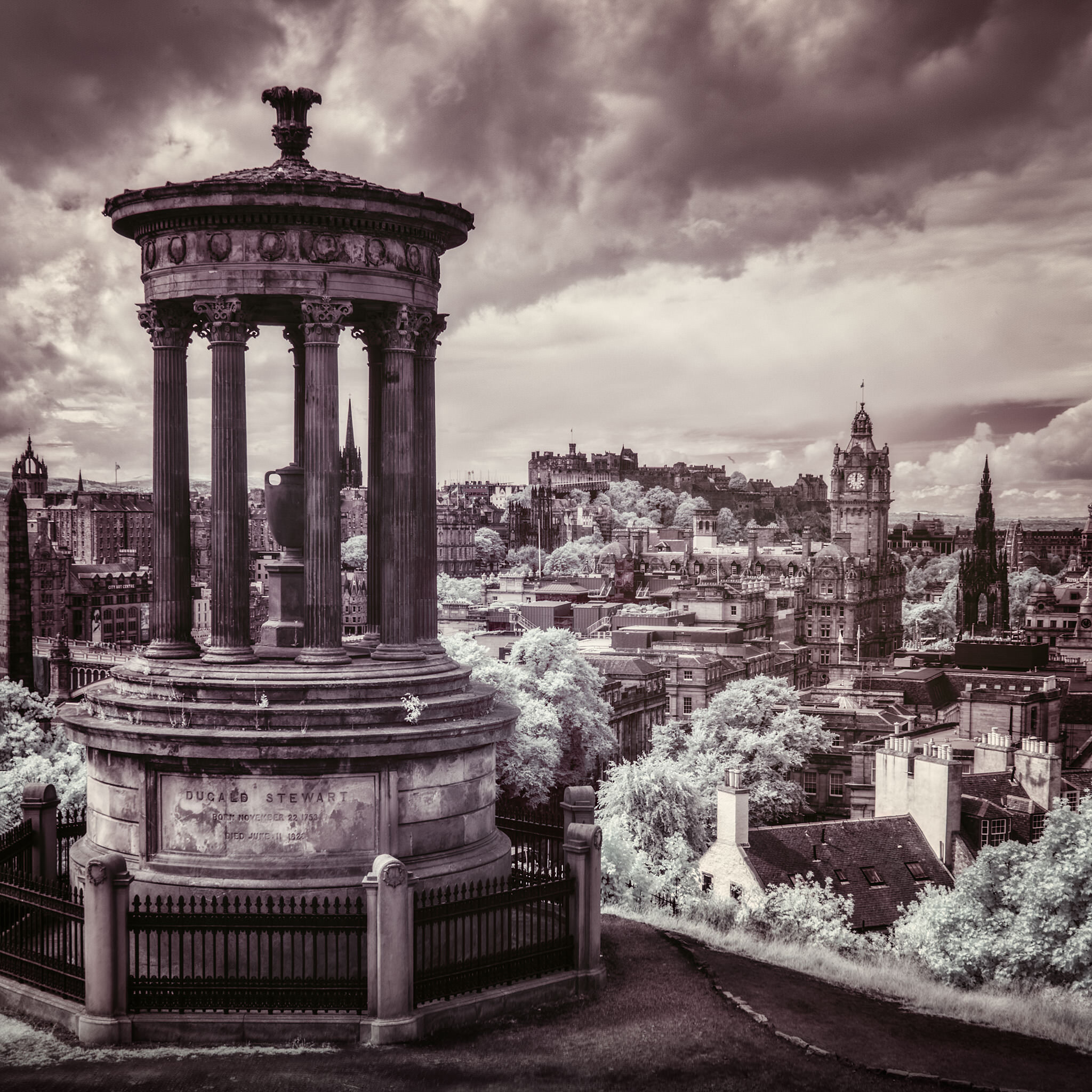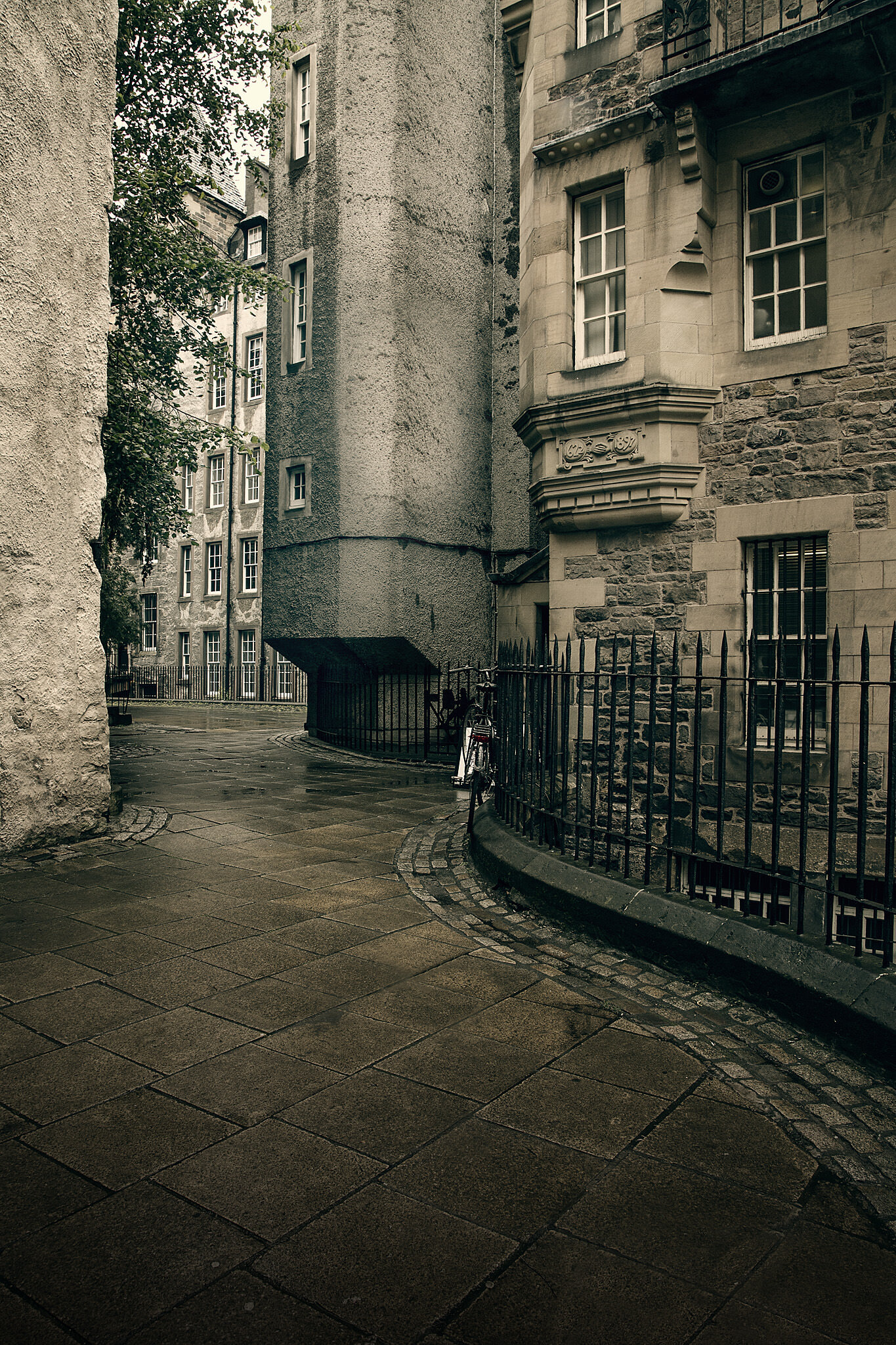Edinburgh, Scotland





Archaeological excavations of the area around castle rock in Edinburgh, have uncovered evidence of a settlement of round houses dating back to the late Bronze Age, around 900 B.C. The hilltop settlement grew during the first and second centuries A.D., by which time the Romans had arrived on the northern border of their territories at the Antonine Wall, which was just west of Edinburgh. Archaeologists also found a lot of Roman material, which suggests that the Romans had close contact with the Votadini tribe who lived here.
In the 7th Century, the settlement on castle rock, where Edinburgh Castle now stands, was known as Dunedin, meaning a fortified town on a steep hill. Dunedin was a Celtic town, and the Romans knew it's people as the Votadinim. In the 7th Century, an army of Angles captured Dunedin, and for the next 400 years this part of Scotland became part of the Kingdom of Northumbria. The name was changed with the ‘Dun' being replaced with the English word for fortified settlement ‘burgh’, and so the name became Edinburgh.
In 854 there was already a church on the site of St. Giles Cathedral, belonging to Lindisfarne. By 1150, the monks of St. Giles were farming lands in the area, and built a larger church by the end of the 12th Century.
Edinburgh and Lothian were recaptured by the Scots in 1018, when Malcolm II defeated the Northumbrians at the Battle of Carham, and secured for Scotland the territory between the Firth of Forth and the River Tweed. Edinburgh Castle first appears in history around the end of the 11th Century.
War often broke out with the neighbouring English and, in 1093, Malcolm III was killed at the Battle of Alnwick. Queen Margaret heard of the death of her husband, while she was seriously ill herself, at Edinburgh Castle. The news was said to have caused her death, and her body was taken out of the castle and buried in Dunfermline Abbey. It is their son, King David I, who is thought to have built St. Margaret’s Church, which is now the oldest building at the castle, and all that remains of the medieval castle today. Queen Margaret was Canonised as St Margaret in 1250.
In 1296, King Edward I of England invaded Scotland, and took Edinburgh Castle. He then installed his own large garrison there, which had 347 soldiers in 1300. After the death of Edward I in 1307, the English grasp on Scotland weakened. In 1314, Sir Thomas Randolph, Earl of Moray and nephew to Robert the Bruce, recaptured Edinburgh Castle. They managed to do the seemingly impossible, and a group of thirty men ascended the north precipice of castle rock, taking the garrison by surprise.
Robert the Bruce ordered the dismantling of the defences of Edinburgh Castle, to prevent reoccupation by the English. The Wars of Independence ended with Robert the Bruce’s victory over the English, at Bannockburn in 1314, but by the time of his death in 1329, hostilities broke out again and in 1335 the castle was once more in the hands of the English. In 1341, after the English had improved the castles defences, Sir William Douglas led a party disguised as merchants bringing supplies to the castle garrison. The ‘merchants' dropped their load at the gates and prevented the closure of the portcullis. A larger force was hidden nearby and rushed to join them, wherein the Scots took the castle once again. Most of the English garrison had their throats cut, and their bodies were thrown over the crags. The fighting would continue for the next 300 years.
In the 15th Century, James II’s brother, Alexander, Duke of Albany, was imprisoned at the castle in David’s Tower. He and his servant escaped by killing the Captain of the Guard as well as three soldiers, while they were drunk. They then lowered themselves down the walls on a rope made of sheets.
For over 1000 years, the Royal Mile has been at the heart of Scotland’s capital. The ancient street runs from Edinburgh Castle, to Holyrood Palace. The houses of wealthy merchants, known as burgesses, fronted the long street. In the Middle Ages, Edinburgh ended part way down the Royal Mile, at the Netherbow Gate. This was a protected gateway, which separated Edinburgh from the Canongate, where Holyrood Abbey stood.
Holyrood started its life as an Abbey of Canons Regular, which was founded in 1128, by King David I of Scotland. The ruined church is all that remains of the Abbey today. It was during the 15th Century that the Abbey guesthouse was turned into a royal residence, and after the Scottish Reformation, the Palace was expanded further. The Abbey church was still used as the parish church until the 17th Century, when it's roof collapsed.
When King Henry II of France died in 1559, his widow, Mary Stewart, was Queen Regent of Scotland, and Queen Consort of France, with a good claim to the English throne, as her mother was the sister of Henry VIII of England. The French had no use for the childless widow, and she returned to Scotland in 1561.
Mary, Queen of Scots, chose for her husband Lord Darnley, whose jealousy during her pregnancy led to rebellion and murder in the Palace at Holyrood. On the 9th of March 1566, while Queen Mary was dining with guests, Darnley entered the Queen’s apartments thought a private stairway below, where he dragged David Rizzio, who was Queen Mary’s secretary, from the room while he protested. He then stabbed and beat him to death outside.
By the next year, Queen Mary was discussing the problem of her husband. We don’t know exactly what happened to Darnley, but his house at Kirk o’ Field in Edinburgh, where he was staying in February of 1567, was completely destroyed by an explosion in the middle of the night. His body however, was found in a garden. The Earl of Bothwell was thought to have been involved in the death of Darnley, when he married the Queen only three months later.
There was then a plot to free Mary, Queen of Scots, from Bothwell and she was ‘rescued’ at Carbeen Hill on the 15th of June 1567, where she was taken as a prisoner and put in Lochleven Castle. There she was forced to sign a Deed of Abdication, and to name a Council of Regency for her infant son. On the 2nd of May 1568, Queen Mary escaped and traded one jailer for another, when she asked her cousin Elizabeth I for help.
John Knox’s House appears today, as it did in 1760, and stands near Netherbow Gate. The house itself dates from the mid-16th Century, with parts of it dating back to the 15th Century. Its most famous owner is John Knox, who’s aim was to create a reformed church in Scotland, banish ‘popery’, and strengthen democracy, by setting up a system of comprehensive education, which was all very enlightened for the 16th Century, until you take into account his writings against female rule, which was published in Geneva in 1558. In which he says:
‘To promote a woman to bear rule, superiority, dominion, or empire above any realm, nation, or city, is repugnant to nature; contumely [an insult] to God, a thing most contrary to his revealed will and approved ordinance; and finally, it is the subversion of good order, of all equity and justice.’
Queen Elizabeth I was NOT amused.
In 1603, upon the death of Queen Elizabeth I of England, King James VI of Scotland, the son of Mary Queen of Scots, succeeded to the English throne. He was crowned on the 24th of March 1603, where for the first time England and Scotland were under the same ruler. After the Union of the Crowns, he based himself in England and returned to Scotland only once, in 1617. He styled himself ‘King of Great Britain and Ireland.’
Traveling to Edinburgh today feels like going back in time, but you are not going to the middle ages as most of the buildings date from the 16th and 17th Centuries. Yet there is an ancient feel to the city that just seems to be in its bones.


















